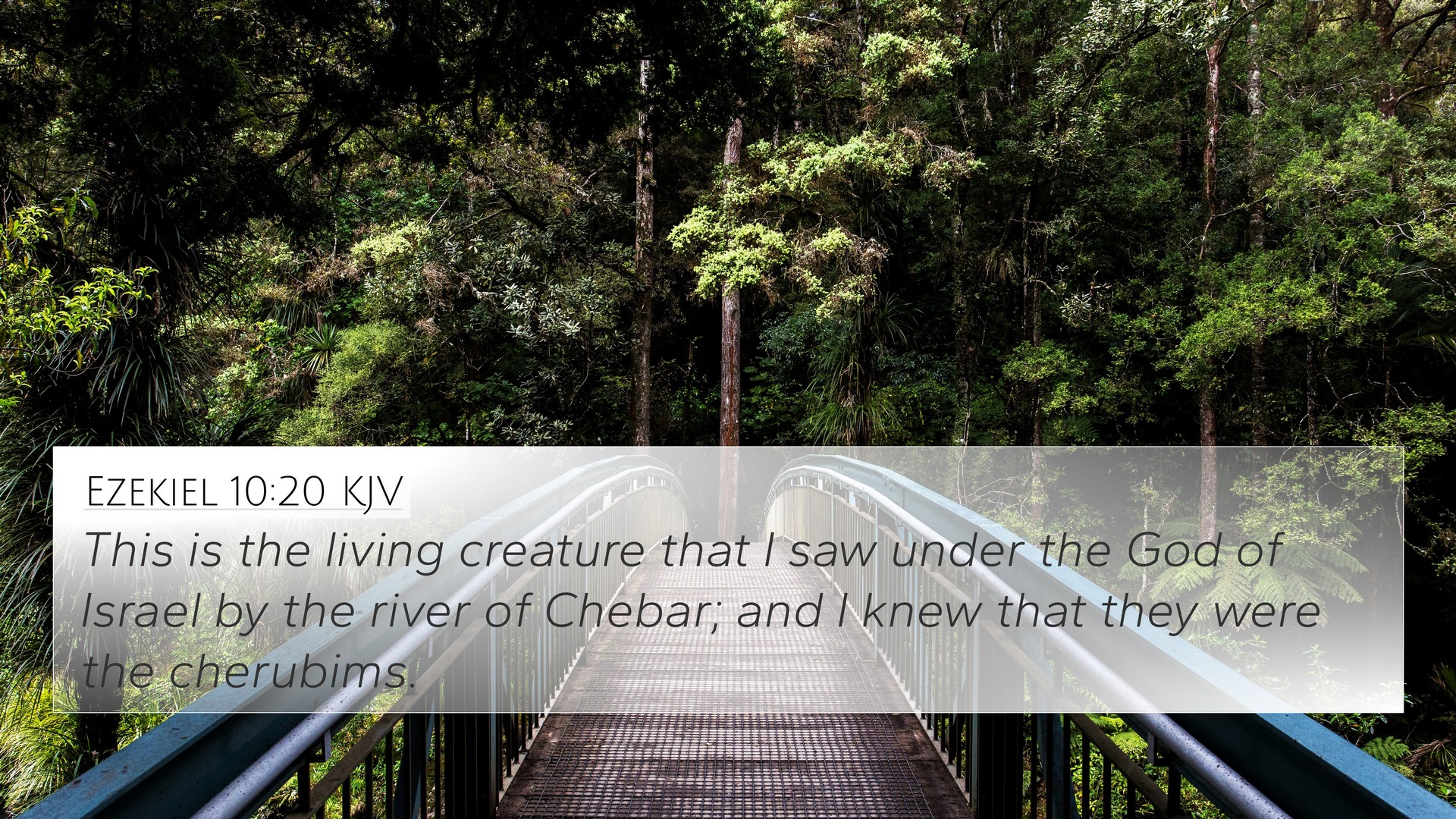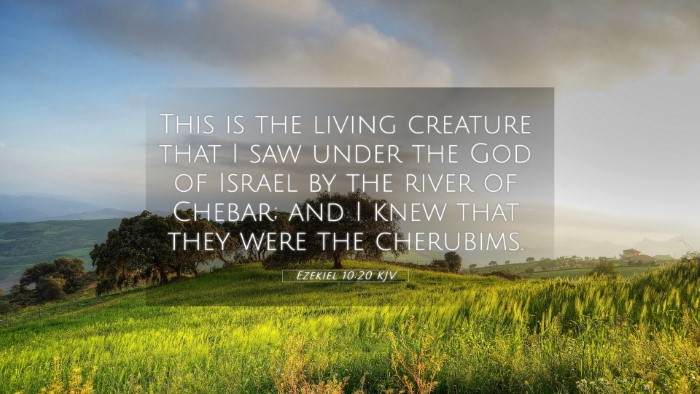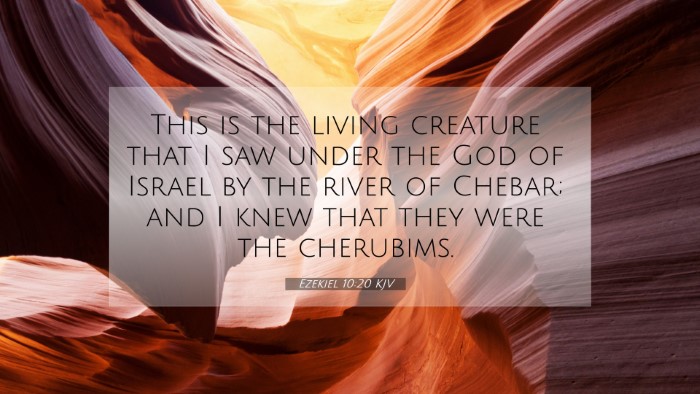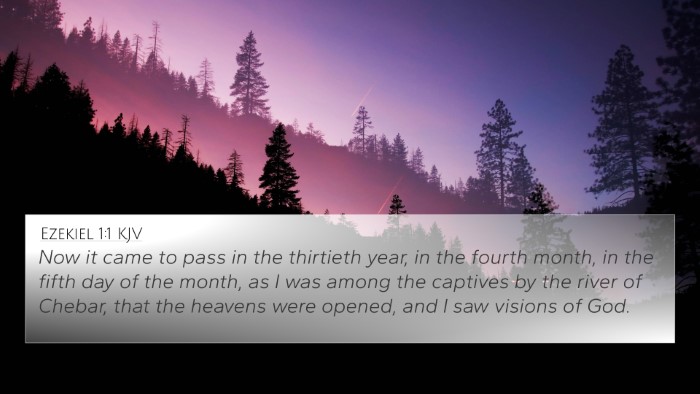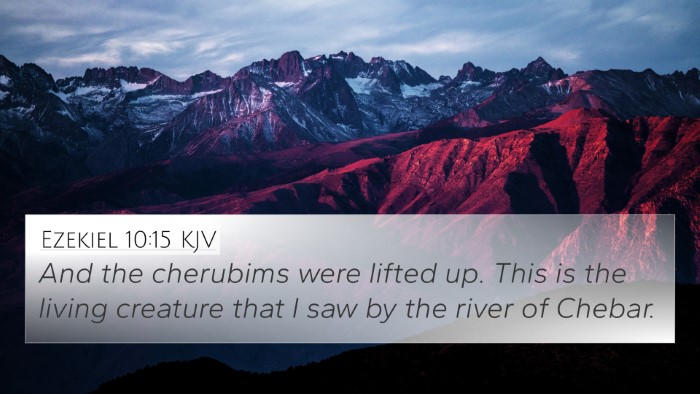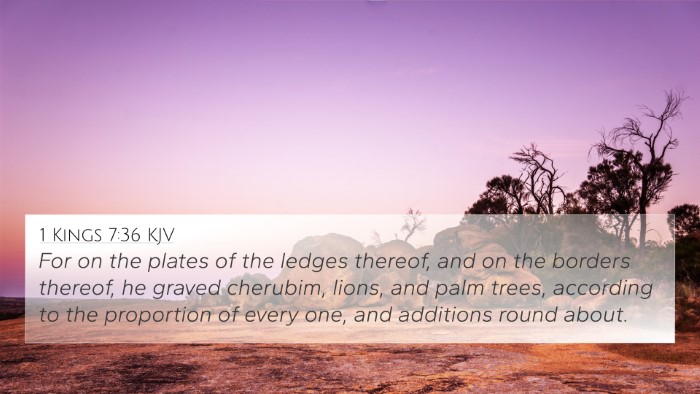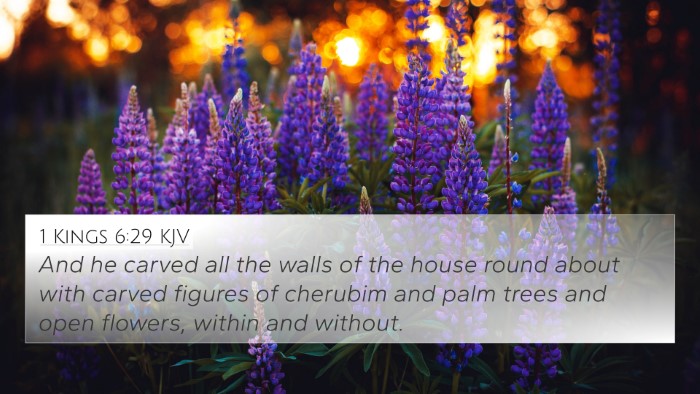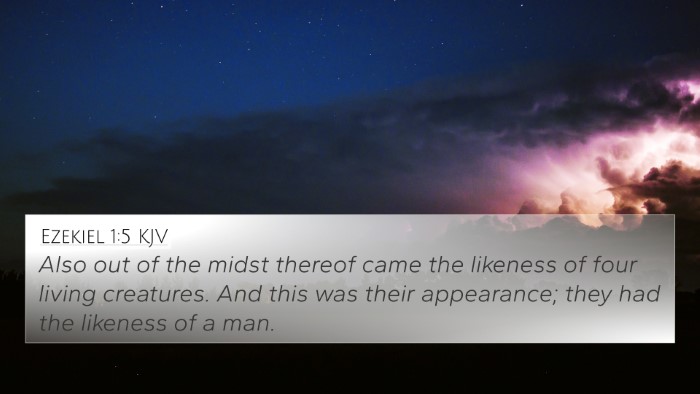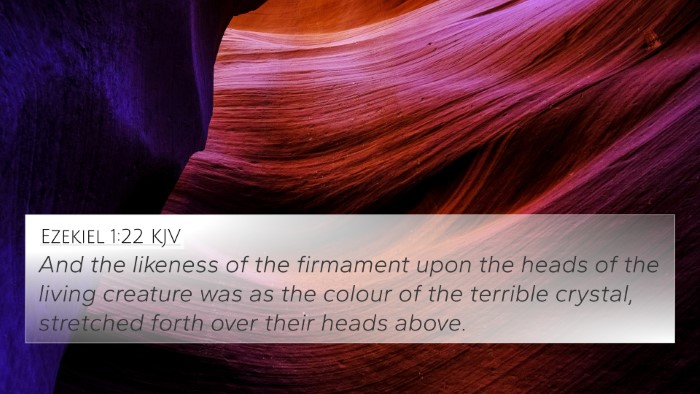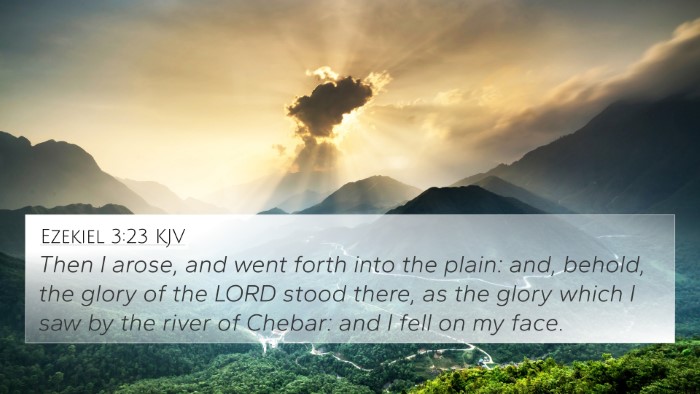Ezekiel 10:20 - Summary and Interpretation
Ezekiel 10:20 states, "This is the living creature that I saw under the God of Israel by the river of Chebar; and I knew that they were the cherubims." This verse, part of Ezekiel's vision, underscores his encounters with divine beings and the presence of God among His people. Below, insights from various public domain commentaries have been synthesized to provide a deeper understanding of this passage.
Contextual Background
In the context of the book of Ezekiel, the prophet received a series of visions concerning the destruction of Jerusalem and the eventual restoration of Israel. Chapter 10 describes a vision of God’s glory departing from the temple, linking it to the cherubim, celestial beings that symbolize God’s sovereignty and presence.
Commentary Insights
This passage evokes several key themes noted by commentators:
- Divine Presence: Matthew Henry highlights the importance of cherubim as guardians of God’s presence, indicating that wherever God reveals Himself, these creatures are present.
- Symbolism of Glory: Albert Barnes notes that the vision underscores the holiness of God and the seriousness of sin, showing that divine glory cannot remain where sin prevails.
- Recognition of the Divine: Adam Clarke emphasizes Ezekiel's understanding and recognition of the cherubim, suggesting a personal and profound encounter with the divine elements of creation.
Key Themes and Concepts
Several key themes emerge from Ezekiel 10:20:
- Recognition of Divine Beings: Ezekiel’s acknowledgment of the cherubim reflects a necessary understanding of their role in the heavenly hierarchy.
- Presence of God: This verse illustrates God's continual connection and oversight of His people, even in times of distress.
- Theological Implications: The mention of the cherubim leads to discussions about their roles in both the Old and New Testaments, linking them to the heavenly realm and Christ’s redemptive work.
Cross-References to Consider
Studying Ezekiel 10:20 in connection with the following verses provides a broader understanding of its implications and relevance:
- Genesis 3:24: The cherubim guarding the way to the tree of life.
- Exodus 25:20: Description of the mercy seat and the cherubim overshadowing it.
- Isaiah 6:2: The seraphim, another class of heavenly beings, which ties into the biblical theme of heavenly worship.
- Revelation 4:6-8: The living creatures around the throne of God in heaven.
- Hebrews 9:5: Reference to the cherubim as part of the earthly tabernacle.
- Psalm 80:1: God as Shepherd and the cherubim who dwell between the cherubim.
- Zechariah 6:5: The spirits of the heavens that serve before the Lord.
Applying the Insights
In understanding Ezekiel 10:20, believers can reflect on the nature of God’s presence and recognize the gravity of His sovereignty. The cherubim as representatives of divine authority remind us of the holiness required in God’s presence.
Moreover, the interconnectedness of various biblical texts through cross-referencing enriches the study of scripture. By linking verses such as Ezekiel 10:20 with those mentioned above, one can see a greater tapestry of biblical theology regarding divine beings, their roles, and our relationship with God.
Tools for Further Study
For further exploration of cross-referencing in the Bible, consider utilizing:
- Bible Concordances: These are essential for locating passages and understanding their context.
- Bible Cross-Reference Guides: Such tools facilitate locating verses that correlate with specific themes or concepts.
- Cross-Reference Bible Study Methods: Implementing structured methods can deepen your understanding of the connections between verses.
Conclusion
In conclusion, Ezekiel 10:20 holds significant weight in understanding the nature of God and His heavenly host. By recognizing this verse's connections with other scriptures, believers can engage in a richer and more meaningful study of the Bible. Such a comparative Bible verse analysis not only highlights the links between Old and New Testament themes but also allows for deeper theological reflection.
